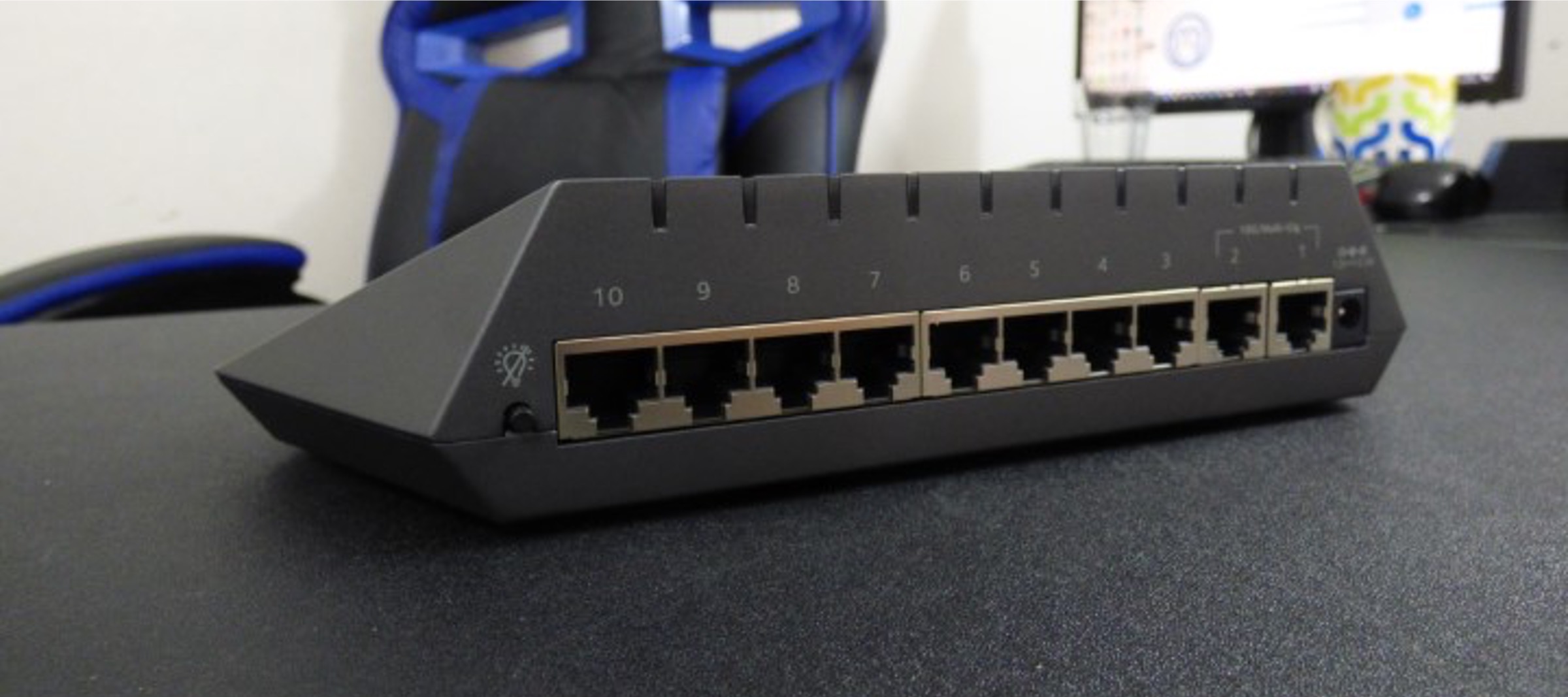Introduction
Welcome to the world of network switches, where the quest for faster and more reliable connections continues to drive technological advancements. One such innovation that has garnered attention in the realm of networking is the Link Aggregation Group (LAG) network switch. This powerful tool has revolutionized the way data is transmitted across networks, offering enhanced performance and resilience.
In today's fast-paced digital landscape, the demand for seamless connectivity has never been greater. Whether in a corporate setting, a data center, or a home network, the need to transfer data swiftly and efficiently is a priority. This is where the LAG network switch comes into play, providing a solution that optimizes network performance and ensures uninterrupted data flow.
As we delve into the intricacies of LAG network switches, we will explore their definition, functionality, benefits, and important considerations for selecting the right switch for your specific networking needs. By the end of this journey, you will have a comprehensive understanding of how LAG network switches operate and how they can elevate your network infrastructure to new heights of efficiency and reliability. So, fasten your seatbelts as we embark on an enlightening exploration of the LAG network switch.
Definition of a LAG Network Switch
A Link Aggregation Group (LAG) network switch, also known as a port trunking or link bundling, is a method used to combine multiple physical Ethernet links into a single logical link. This process involves the aggregation of these links to form a high-bandwidth data path, which enhances the overall throughput and provides fault tolerance. LAG network switches are designed to optimize network performance by distributing traffic across the aggregated links, thereby preventing bottlenecks and ensuring efficient data transmission.
By bundling multiple physical links, LAG network switches allow for the creation of a single, high-speed connection between two network devices, such as switches, routers, or servers. This consolidated link operates as a single channel, enabling the simultaneous transfer of data packets, which results in improved network capacity and reliability.
Furthermore, LAG network switches adhere to the IEEE 802.3ad standard, which specifies the method for bundling multiple physical links into a single logical link. This standardization ensures interoperability between LAG-capable devices, allowing for seamless integration and consistent performance across various network infrastructures.
In essence, a LAG network switch serves as a vital tool for optimizing network connectivity, enhancing data transfer speeds, and fortifying network resilience. Its ability to aggregate multiple links into a unified, high-bandwidth channel makes it an indispensable asset in modern networking environments, where speed, reliability, and seamless data transmission are paramount.
How Does a LAG Network Switch Work?
At the core of a LAG network switch’s functionality lies the process of link aggregation, which involves the bundling of multiple physical Ethernet links to create a single logical link. This aggregation is achieved through the use of a standardized protocol, such as IEEE 802.3ad, which governs the method by which the links are combined to form a unified channel for data transmission.
When implementing a LAG network switch, the connected devices, such as switches, routers, or servers, establish a LAG group by configuring the physical ports to operate as part of the aggregated link. Once the LAG group is formed, the switch employs a load-balancing algorithm to distribute incoming data packets across the aggregated links, thereby optimizing the utilization of available bandwidth and preventing congestion on any single link.
As data traverses the network, the LAG network switch leverages the aggregated links to facilitate high-speed data transfer, allowing for simultaneous transmission and reception of data packets. This parallel processing capability enhances the overall throughput and reduces latency, resulting in improved network performance and responsiveness.
Moreover, in the event of a link failure or disruption, a LAG network switch provides fault tolerance by seamlessly redistributing the traffic across the remaining operational links within the LAG group. This dynamic failover mechanism ensures uninterrupted data flow and mitigates the impact of link failures, thereby enhancing the reliability and resilience of the network.
By harnessing the power of link aggregation, a LAG network switch empowers organizations to optimize their network infrastructure, increase data transfer speeds, and fortify the stability of their communication channels. This innovative approach to network connectivity underscores the pivotal role that LAG network switches play in modernizing and enhancing the efficiency of data transmission across diverse networking environments.
Benefits of Using a LAG Network Switch
The adoption of a LAG network switch offers a myriad of advantages that contribute to the optimization and resilience of network infrastructure. Some of the key benefits include:
- Enhanced Throughput: By aggregating multiple physical links into a single logical link, a LAG network switch significantly increases the overall throughput, allowing for the seamless transfer of data at higher speeds. This enhanced capacity is particularly advantageous in environments with high data traffic demands, such as data centers and enterprise networks.
- Improved Fault Tolerance: LAG network switches provide fault tolerance by enabling the redistribution of traffic across the aggregated links in the event of a link failure. This proactive approach to mitigating disruptions ensures continuous data flow and minimizes the impact of potential network failures, thereby enhancing the reliability of the network.
- Load Balancing: Through the utilization of load-balancing algorithms, LAG network switches evenly distribute incoming data packets across the aggregated links, preventing congestion and optimizing the utilization of available bandwidth. This equitable distribution of traffic enhances network performance and minimizes latency, resulting in a more responsive and efficient network.
- Scalability: LAG network switches offer scalability by accommodating the addition of more physical links to the aggregated group, thereby allowing organizations to expand their network capacity without compromising performance. This scalability feature provides flexibility in adapting to evolving network requirements and accommodating future growth.
- Cost Efficiency: By maximizing the utilization of existing network infrastructure and minimizing the need for additional expensive hardware, LAG network switches offer a cost-effective solution for enhancing network performance. The ability to consolidate and optimize network resources translates to long-term cost savings and improved operational efficiency.
Collectively, these benefits underscore the significant impact of LAG network switches in empowering organizations to elevate the performance, reliability, and scalability of their network infrastructure. The adoption of LAG network switches represents a strategic investment in optimizing network efficiency and fortifying the resilience of data transmission, thereby aligning with the evolving demands of modern networking environments.
Considerations When Choosing a LAG Network Switch
When selecting a LAG network switch for deployment within a network infrastructure, several key considerations should be taken into account to ensure optimal performance and compatibility. These considerations encompass various aspects, including:
- Compatibility and Standards: It is essential to verify that the LAG network switch complies with the IEEE 802.3ad standard for link aggregation. Additionally, compatibility with existing network devices and protocols should be assessed to facilitate seamless integration and interoperability.
- Scalability and Port Density: Organizations should evaluate the scalability of the LAG network switch, considering its ability to accommodate a growing number of aggregated links and the availability of sufficient ports to support expanding network requirements. Assessing the switch’s port density is crucial for future-proofing the network infrastructure.
- Load-Balancing Mechanisms: The LAG network switch’s load-balancing capabilities should be evaluated to ensure efficient distribution of traffic across the aggregated links. Understanding the load-balancing algorithms and their alignment with the network’s traffic patterns is essential for optimizing network performance.
- Redundancy and Failover: Assessing the switch’s redundancy features, such as support for redundant power supplies and hot-swappable components, is vital to ensure continuous operation and minimize the risk of downtime. Additionally, evaluating the failover mechanisms for link failure scenarios is crucial for maintaining uninterrupted data flow.
- Management and Monitoring: The availability of robust management and monitoring features, such as remote configuration, monitoring interfaces, and diagnostic tools, is critical for efficiently managing and troubleshooting the LAG network switch. These capabilities contribute to proactive network maintenance and rapid issue resolution.
- Quality of Service (QoS) Support: Organizations with specific performance requirements should consider the LAG network switch’s support for Quality of Service (QoS) features, which enable prioritization of critical traffic and the allocation of network resources based on predefined policies. QoS support is particularly beneficial in environments with diverse application and service demands.
By carefully evaluating these considerations, organizations can make informed decisions when selecting a LAG network switch that aligns with their network infrastructure requirements, performance objectives, and future scalability needs. This strategic approach to choosing a LAG network switch ensures the seamless integration of advanced networking capabilities and the optimization of data transmission across diverse networking environments.
Conclusion
As we conclude our exploration of LAG network switches, it becomes evident that these innovative networking solutions offer a transformative approach to enhancing network performance, resilience, and scalability. By aggregating multiple physical links into a unified channel, LAG network switches empower organizations to optimize data transfer speeds, fortify fault tolerance, and maximize the utilization of available network resources.
The benefits of LAG network switches, including enhanced throughput, improved fault tolerance, efficient load balancing, scalability, and cost efficiency, underscore their pivotal role in modernizing network infrastructure and aligning with the evolving demands of diverse networking environments. Furthermore, the considerations for selecting a LAG network switch emphasize the importance of compatibility, scalability, load-balancing mechanisms, redundancy, management and monitoring capabilities, and Quality of Service (QoS) support in making informed decisions that align with the organization’s networking objectives.
As technology continues to advance and networking requirements evolve, the adoption of LAG network switches represents a strategic investment in optimizing network efficiency, fortifying the resilience of data transmission, and future-proofing network infrastructure. By harnessing the power of LAG network switches, organizations can navigate the complexities of modern networking environments with confidence, knowing that their network infrastructure is equipped to deliver superior performance and reliability.
In essence, the journey through the realm of LAG network switches has unveiled a paradigm shift in network connectivity, where the convergence of multiple links brings forth a new era of seamless data transmission and unparalleled network optimization. The impact of LAG network switches reverberates across diverse industries, empowering organizations to embrace the future of networking with agility, efficiency, and unwavering connectivity.

























